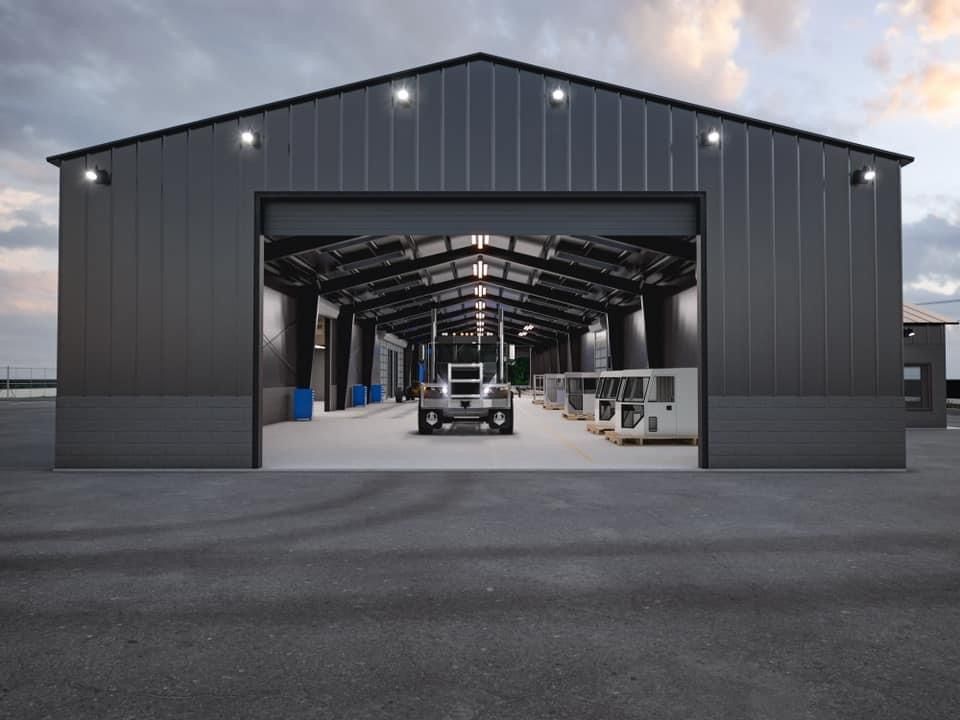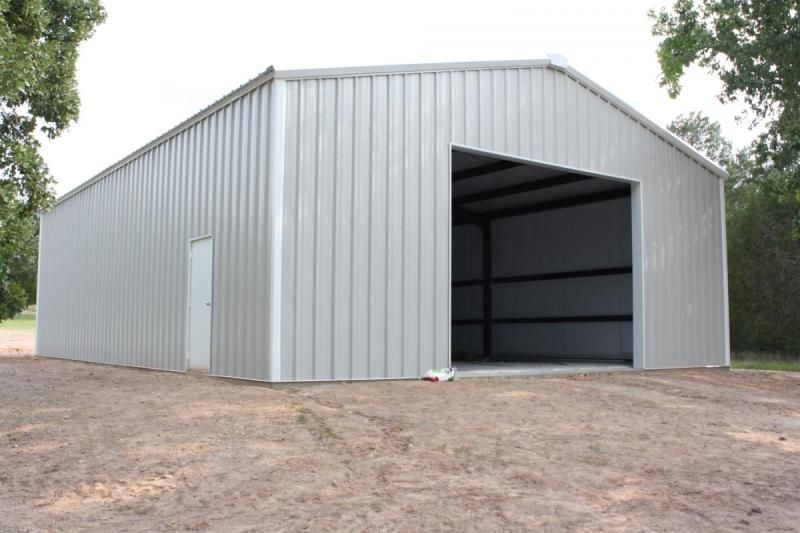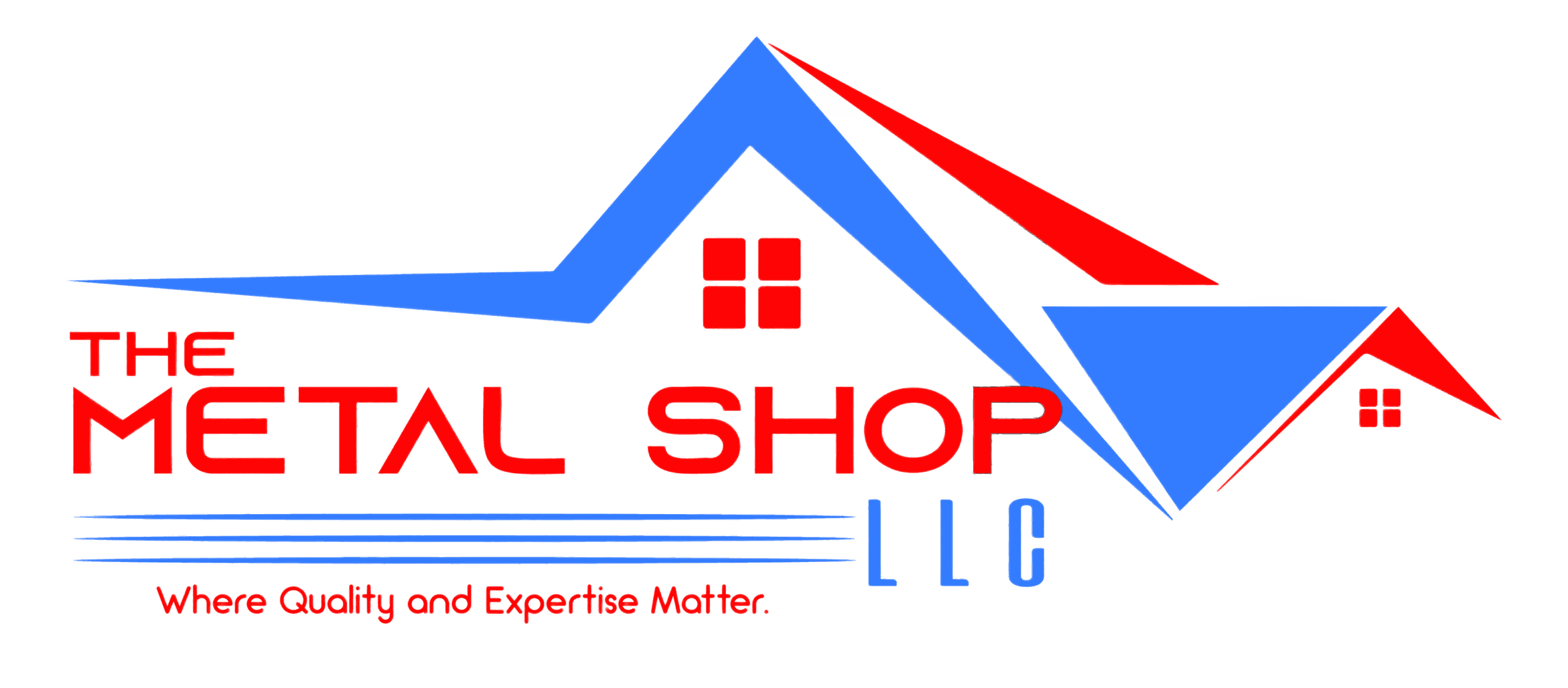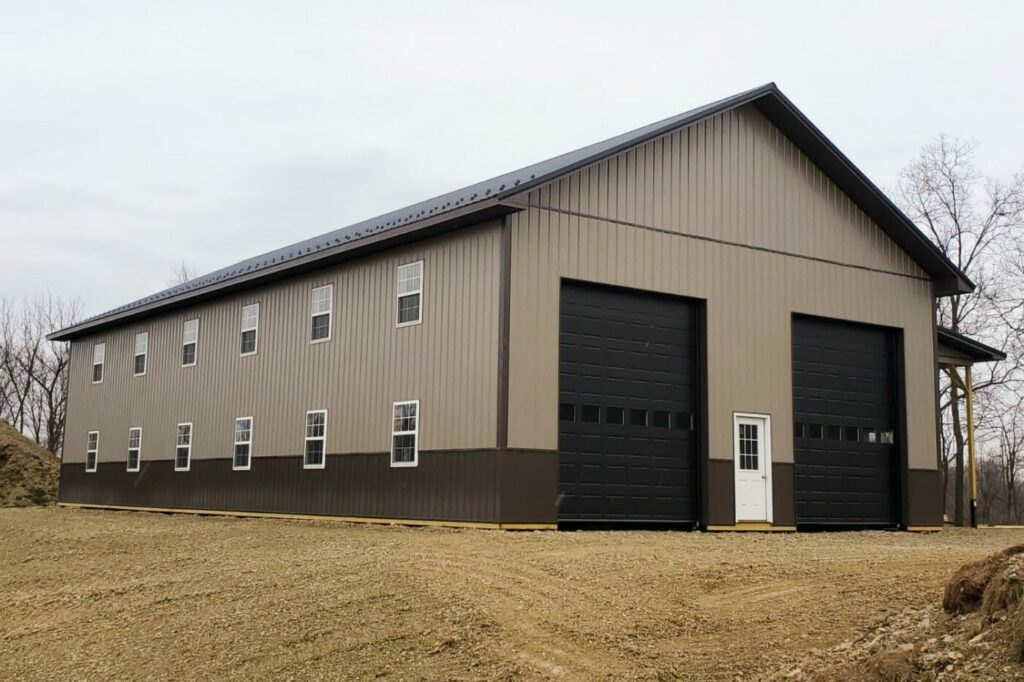Thinking about building a pole barn house? Cost is usually the first question that comes up. Prices vary depending on size, materials, and finishes, but knowing the averages helps you plan smarter. Here’s a breakdown of what really drives the price so you can budget with confidence.
How much does it cost to build a pole barn house?
A pole barn house typically costs $100,000–$250,000 or $50–$120 per square foot, depending on size, materials, finishes, and location.
Key Takeaway
- Building a pole barn house costs $100,000–$250,000 on average.
- Expect $50–$120 per sq. ft., depending on size, finishes, and location.
- Site prep, materials, labor, and permits are the biggest cost drivers.
- Smart design and phased construction help reduce expenses.
What Is a Pole Barn House?
Definition and Design
A pole barn house is a home built using post-frame construction. Large posts are set into the ground or on a foundation, supporting the walls and roof. This method creates wide open spaces with fewer interior load-bearing walls.
Key Features
These homes are versatile and can be finished to look like modern houses. They often include metal siding, high ceilings, and flexible layouts. Builders also like them because they’re faster and cheaper to put up than traditional homes.
Why Homeowners Choose Them
Pole barn houses are popular for their affordability and durability. They give homeowners plenty of space for living areas, workshops, or storage—all while keeping construction costs down.
Average Cost to Build a Pole Barn House
National Average Price Range
Building a pole barn house typically costs between $100,000 and $250,000, depending on size and finish level. On a per-square-foot basis, expect $50 to $120. Smaller builds with basic finishes stay at the lower end, while larger custom homes climb higher.
Cost per Square Foot
For a simple shell without finishes, costs start at $20–$40 per square foot. Adding insulation, plumbing, and interiors raises it to $60–$100. Custom layouts or luxury upgrades like vaulted ceilings can reach $120–$150 per square foot.
Small vs. Large Builds
A 1,200 sq. ft. pole barn house may cost around $80,000–$120,000 with standard finishes. A 2,400 sq. ft. home often ranges $150,000–$200,000. Larger builds over 3,000 sq. ft. with custom layouts can reach $250,000+. Size matters because material and labor costs scale directly with square footage.
What This Means for You
Your budget depends on striking the right balance between essentials and upgrades. A modest starter build may cover short-term needs, while a larger home with premium finishes becomes a long-term investment. Exploring different pole barn financing options can also help you plan more realistically and avoid costly surprises during construction.
Major Factors That Affect Pole Barn House Costs

Size of the House
Size is the biggest factor when it comes to cost. A smaller 1,200 sq. ft. home might only need basic framing and fewer materials, while a 3,000+ sq. ft. house requires additional posts, trusses, and roofing. Along with size, you’ll also want to discover how to finance a pole barn, since budgeting plays a major role in the overall project cost.
A 1,200 sq. ft. home needs fewer materials and labor, while a 3,000+ sq. ft. home requires significantly more framing, trusses, and roofing. Starting small and planning future add-ons is a cost-effective approach.
Location & Land Preparation
Where you build matters. Rural areas with open space are often cheaper, but rocky or uneven land may require costly grading or excavation. Soil quality also plays a role since poor drainage can demand extra foundation work.
If your site is in a flood-prone or clay-heavy region, expect to spend more on site prep and drainage systems. Preparing the land right at the start saves expensive fixes later.
Materials & Finishes
The choice of materials dramatically shifts the final bill. Basic steel siding and metal roofing are budget-friendly, while wood siding or architectural shingles add to the price. Inside, concrete floors with minimal finishing cost far less than hardwood flooring, custom cabinetry, and premium fixtures.
A smart move is to focus on structural quality first and worry about finishes later as your budget allows. If you’re unsure where to start, take time to compare pole barn vs metal building options so you invest in the right foundation from day one.
Labor & Construction Method
Labor costs vary depending on whether you hire a professional crew or handle parts of the build yourself. A DIY kit can save thousands, but it requires time, tools, and skill. Hiring contractors ensures efficiency but comes with higher hourly rates.
Consider a hybrid approach: outsource complex tasks like framing or electrical work, and handle simpler jobs like painting or flooring.
Permits & Local Building Codes
Every county has its own rules, and permits can add unexpected costs. Some areas may require engineered plans or inspections that increase upfront expenses. While these add to the budget, they also ensure safety and compliance.
Check with your local building office early in the planning stage. Factoring in permit costs ahead of time helps avoid delays and surprise fees.
Cost Breakdown by Component
Foundation & Site Prep
Every build starts with the ground. Site prep involves clearing land, grading, and sometimes soil testing. This can run anywhere from $2,000 to $8,000, depending on the lot.
Site preparation includes clearing, grading, and sometimes soil testing, costing $2,000–$8,000. Adding a concrete slab for durability adds $4–$8 per sq. ft. Proper prep prevents drainage issues and structural problems later.
Framing & Structure (Posts, Trusses, Roofing)
Framing costs $10–$20 per sq. ft. Pressure-treated posts are affordable, while laminated or steel options cost more but add strength. Roofing varies: metal is durable and common, while asphalt shingles are cheaper but less long-lasting.
Roofing is another factor that affects overall expenses. While metal roofing offers durability and is a popular choice, asphalt shingles usually cost less upfront. The option you choose influences not only the roof’s lifespan but also the total pole barn homes cost.
Exterior (Siding, Doors, Windows)
Exterior finishes protect your home and shape curb appeal. Metal siding is a cost-effective choice, while wood or vinyl adds variety at a higher price. Siding typically runs $5–$15 per square foot.
Doors and windows range widely in cost. A basic package may be a few thousand dollars, while custom options can quickly climb above $10,000. Balancing durability and aesthetics keeps costs reasonable.
Interior (Insulation, Drywall, Flooring)
Finishing the inside turns the barn into a true home. Insulation is critical for comfort and energy savings, costing $1–$3 per square foot. Drywall installation generally adds $2–$4 per square foot.
Flooring is flexible. You can keep it basic with concrete for $3–$6 per square foot or upgrade to hardwood, tile, or carpet for $5–$15 per square foot. Budgeting here depends on lifestyle and design goals.
Utilities (Plumbing, Electrical, HVAC)
Utilities often surprise first-time builders. Plumbing installation averages $4,000–$12,000, depending on bathrooms and kitchen setup. Electrical wiring and fixtures can range from $5,000–$15,000.
HVAC is another major line item. Basic systems may cost $5,000, but larger homes or energy-efficient systems can exceed $15,000. Planning utilities early avoids unexpected overruns.
Key Takeaway on Component Costs
Every part of a pole barn house carries its share of the budget. Site prep and structure set the base, while interiors and utilities define comfort and livability. By knowing what each element costs, you can prioritize upgrades that add value without breaking your budget.
Cost per Square Foot Comparison

Basic Builds
A basic pole barn house with minimal finishes often costs $50–$70 per square foot. This range usually covers standard framing, siding, and roofing but excludes high-end materials. It’s ideal for simple living spaces or starter homes.
Mid-Range Builds
For more comfort and durability, expect $80–$120 per square foot. This includes upgraded insulation, energy-efficient windows, and better interior finishes. Most families fall into this range since it balances cost and quality.
High-End or Custom Builds
High-end builds typically cost $120–$150 per sq. ft. Custom layouts, premium finishes, and features like lofts or large porches increase costs but also add long-term value.
Size Examples
A 1,000 sq ft home may cost $60,000–$100,000, while a 2,000 sq ft home often runs $160,000–$240,000. Large custom builds over 3,000 sq ft can top $450,000. The bigger the home and the higher the finish level, the more you’ll spend per square foot.
Pole Barn House vs. Traditional Home Costs
Average Price Comparison
A pole barn house is usually far more affordable than a stick-built home. The average cost of a pole barn house runs between $50–$120 per square foot, while traditional homes often range from $150–$300 per square foot depending on finishes and location.
Where You Save with Pole Barn Homes
Savings come from simpler framing, fewer materials, and faster construction times. Large open layouts also reduce costs because fewer interior walls are needed. Lower labor costs make pole barn homes attractive for budget-conscious builders.
Limitations to Consider
While cheaper upfront, pole barn houses may have restrictions with lenders and appraisers. Some insurance companies also treat them differently than conventional homes. Finishes and customization can raise the price quickly, closing the gap between the two options.
The Bottom Line
Pole barn houses offer more space for less money, making them ideal if you’re after a large, functional layout. While traditional homes may still have the advantage in resale value, understanding how much does it cost to convert a pole barn into a house can help you see why smart design choices make this option both affordable and long-lasting.
Additional Costs to Consider
Landscaping
Always compare multiple lenders. The right financing reduces long-term interest and ensures smoother project funding.
Driveways and Garages
Access matters. A gravel driveway is cheaper upfront, while concrete or asphalt costs more but lasts longer. Many owners also add detached or attached garages for storage or vehicles.
Custom Features
Extras like porches, decks, or lofts increase both comfort and cost. These upgrades improve usability and resale value but can quickly push your budget higher.
Utilities and Hookups
Don’t forget water, sewer, or well and septic systems. Utility connections can add significant expenses depending on your location. Factor these in before finalizing your budget.
Ways to Save Money on Building a Pole Barn House
DIY vs Hiring Contractors
Taking on part of the work yourself can cut labor costs. Simple tasks like painting, landscaping, or even interior finishing are manageable for many homeowners. Leave the structural work to professionals to avoid costly mistakes.
Buying Material Kits
Pre-packaged pole barn kits often cost less than sourcing every material separately. They’re designed for efficiency and reduce waste. Kits also save time on planning and ensure you get everything needed in one shipment.
Phased Construction
If your budget is tight, build in phases. Start with the essential structure, then add features like porches, lofts, or extra rooms later. This approach helps spread costs over time without compromising the core build.
Choosing Efficient Designs
Stick to simple layouts and standard sizes to avoid custom charges. Fewer corners, basic rooflines, and minimal extras keep costs down. An efficient design can deliver comfort without the price tag of luxury upgrades.
Smart Budgeting
Compare quotes from multiple builders and suppliers before committing. Small differences in labor or material pricing can add up fast. Careful planning ensures you get the most value for your investment.
Financing Options for Pole Barn Houses
Construction Loans
Many lenders offer construction loans designed for non-traditional homes like pole barn houses. These loans cover building costs upfront, and once the house is complete, they can often be converted into a standard mortgage.
Mortgage Considerations
Not all banks view pole barn houses the same as stick-built homes. Some require additional appraisals or proof of long-term durability. Working with a lender experienced in barn-style builds makes approval easier.
Alternative Financing
If traditional lending isn’t an option, you can explore personal loans, home equity loans, or financing through pole barn kit providers. While interest rates may vary, these options offer flexibility for buyers who want to get started quickly.
Smart Tip
Always compare multiple lenders. The right financing not only makes your build possible but can also save you thousands in long-term payments.
Long-Term Value & Maintenance Costs
Energy Efficiency
Pole barn houses can be highly efficient when insulated properly. Good insulation and modern windows keep heating and cooling costs low, saving you money every year.
Durability and Lifespan
With quality materials and regular upkeep, a pole barn house can last 40–60 years or more. Metal siding and roofing reduce the risk of rot and lower maintenance needs compared to wood.
Routine Maintenance
Like any home, upkeep is required. Checking for leaks, resealing posts, and servicing HVAC systems keep repair bills small. Preventive care often costs less than major fixes later.
Resale Value
Pole barn homes are gaining popularity, and a well-maintained one holds solid resale value. Buyers appreciate the affordability and durability, making your investment attractive in the long run.
Conclusion
Understanding the Costs
Building a pole barn house typically costs $100,000–$250,000, depending on size, materials, and finishes. National averages give a baseline, but local factors often shift the final budget.
Smart Planning Pays Off
Budgeting for site prep, permits, and upgrades ensures fewer surprises. Choosing efficient designs and durable materials keeps costs under control.
Final Takeaway
A pole barn house is generally more affordable than traditional homes, but smart planning determines long-term value. By balancing cost with quality, you can build a home that stays durable and financially sound.

